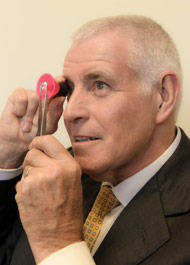Let's Rethink Diamond Grading, Starting with Color
August 08, 24
by Garry Holloway, Melbourne, Australia, inventor of the Ideal-Scope and author of the newly-published How To Select The Best Diamonds: Insider Secrets.
When shopping for diamonds, people want to know how the stone will look on their finger or in a necklace. They're less concerned with technical grades and more interested in the diamond's appearance in real-life settings.
The diamond industry has relied on the same grading system for over 70 years. While it has served us well, it's time to consider if it truly meets the needs of modern consumers. Let's explore how we can make diamond grading more relevant and useful for today's buyers.
In the 1950s, the Gemological Institute of America (GIA) introduced the D-Z color grading system we use today. This system grades diamonds upside-down on a white background. While this method is best for human graders, face-up color grading is impractical as the sparkle makes it hard to assess color.
Today, most labs, including the GIA, use instruments called colorimeters to grade the color of diamonds. These digital tools are designed to grade the pavilion color. Creating a similar instrument for face-up color grading should be feasible.
I propose that labs offer both the traditional pavilion color grade and a new face-up color grade, reflecting what consumers see.
The Impact of Cut and Size on Color
Two factors affect how a diamond's face-up color differs from its upside-down pavilion color:
1. Cut: Better cut with more brilliance and sparkle reduces the face-up color.
2. Size: Larger diamonds appear slightly more tinted than smaller ones of the same color and cut quality.
Different cuts significantly affect face-up color. For example, fancy-colored diamonds are graded face-up because their cut is designed to dramatically exaggerate their color.
A New Approach: Face-Up Color Grading
To address these issues, we could add a "face-up color grade" to the existing system.
Benefits of Face-Up Color Grading:
- More accurate representation of what consumers see.
- Incentivize better cutting practices improving face-up color and sparkle appearance, especially in regard to fancy shape cuts.
- Helps consumers understand why larger diamonds of the same grade may cost more.
- Providing this information would boost consumer confidence and sales.
Implementing the Change
Adding face-up color grading doesn't mean abandoning the current system. Instead, diamonds could receive two color grades:
1. Traditional D-Z grade (current system)
2. Face-up D-Z color grade
This approach would give consumers more complete information without disrupting the existing market structure.
Moving Forward
Revising the diamond grading system to include face-up color grades will provide consumers with more relevant information, driving improvements in diamond cut quality and potentially increasing sales. This change would align the grading process with what consumers see and value most in their diamonds.
It's time for a conversation about how we can evolve diamond grading to better serve today's consumers while maintaining the integrity and consistency that have made the current system so valuable.
Garry Holloway's new book, which includes explanations and images, is available on Amazon.